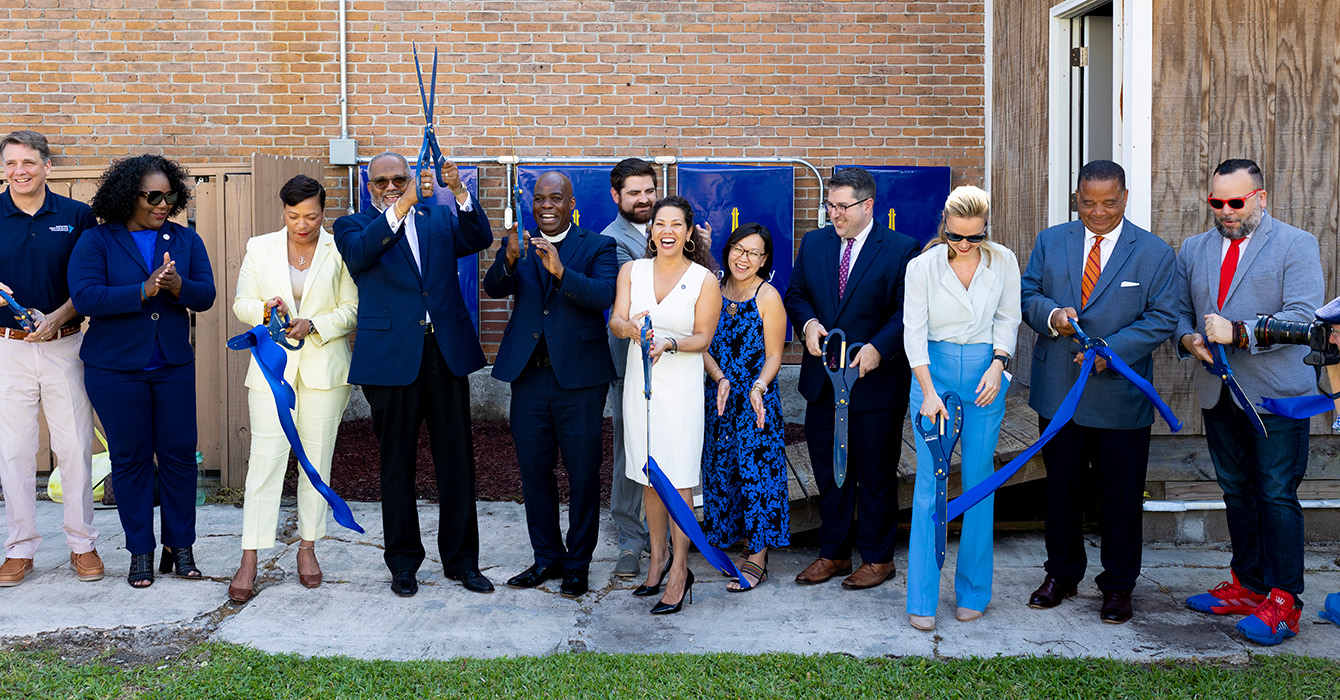I recently had the gift of celebrating a service of death and resurrection for a congregant who had long suffered from a form of dementia.
When I first arrived at this congregation, I was sent out with the senior pastor to visit homebound members and celebrate the Eucharist with them. This woman and her husband were some of the first people we visited.
I remember her lying in the bed as her husband quietly greeted us. As I broke the bread, he whispered, “Make sure it is a small piece; she has trouble swallowing.”
After 60 years of marriage, he stood vigil beside her bed as she slowly lost all memory of who she was. They call the disease “the long goodbye,” and our congregant Paul had been saying this goodbye as his wife, Sue, lost all memory of their life together.
There we stood, offering her a small piece of bread dipped into a cup of grape juice together with the wonderful words, “Do this in remembrance of me.”
As I stood to offer the Words of Grace for Sue’s funeral service, I looked around at the community that had gathered to hear a word of life for her.
I thought of the question asked by Bruce Morrill in his book “Anamnesis as Dangerous Memory”: What happens when the Christian community gathers in faithful response to Christ’s command, “Do this in remembrance of me”?
Each week, as those words of remembrance are spoken aloud, we find ourselves between Ascension and Pentecost. We hang, for just a moment, suspended in that space between ascent and descent.
It is in this liminal space where the Spirit holds us most closely to Jesus and presses our bodies to his in the midst of his Passion. In the Eucharist, our time and space are folded around Christ’s Passion, bunched and pleated and ruched into the salvific moment.
The community that gathered in celebration of this woman who died with a failing memory is the living answer to Morrill’s question.
The shared space of memory in which we participate through the Spirit’s grace is the time of anamnesis. In our eucharistic celebration, we are pressed against Jesus and healed of our brokenness.
In our healing, we are a community capable of caring for those whose memories have failed.
Yet simply imagining the church as a community of care for those suffering from dementia and memory-related illness does not make it clear how we might perform that care.
Sharing in the healing presence of Christ with those whose memories are lost is a wonderful beginning. But in what other ways might we be a memory-bearing community of care?
There are some models. The New Yorker has reported on the Beatitudes Campus in Phoenix, Arizona, for example, which offers a powerful new imagination for those suffering from dementia-related illnesses.
Instead of the traditional path of intensive scheduling and regimentation, the Beatitudes Campus system is determined more by the patient than by the care provider.
One way that caregivers practice this is by offering the residents food throughout the day, circulating among them between mealtimes with appealing snacks such as cookies and lemonade or plates of tiny sandwiches. This cares for them on their time and reduces malnutrition among those who might otherwise forget to eat.
Instead of correcting patients who mistake them for loved ones, the staff allows them to live into their memories as a place of comfort, thus embodying those memories in a new way.
It’s not surprising that Beatitudes Campus grew out of the leadership and vision of the Church of the Beatitudes, a United Church of Christ congregation. Such imaginative care seems likely to come from those who gather to hear again, “Do this in remembrance of me.”
Beatitudes Campus helps us imagine how we might help our memory-impaired brothers and sisters live in their own time and allow them to see their loved ones as they remember them. The Eucharist, with its anamnetic memory of “Christ has died, Christ is risen, Christ will come again,” sustains us in this work.
The Divine Liturgy of St. John Chrysostom includes these words: “Remembering, therefore, this command of the Savior, and all that came to pass for our sake, the cross, the tomb, the resurrection on the third day, the ascension into heaven, the enthronement at the right hand of the Father, and the second, glorious coming.”
By remembering the story of Jesus, the community of faith reminds itself how it came to be. This memory is the foundational identity of the people who gather to remember it together.
The act of anamnesis staves off spiritual amnesia. We gather together to remember who we are so that we will not lose our Christ-embodied memories. Because the church places this sort of embodied memory at the center of its identity, we might be a people properly shaped to care for those who can no longer remember the once-familiar places and faces.
We have the sense of the ending, and we therefore have all the time we need for a long goodbye.














